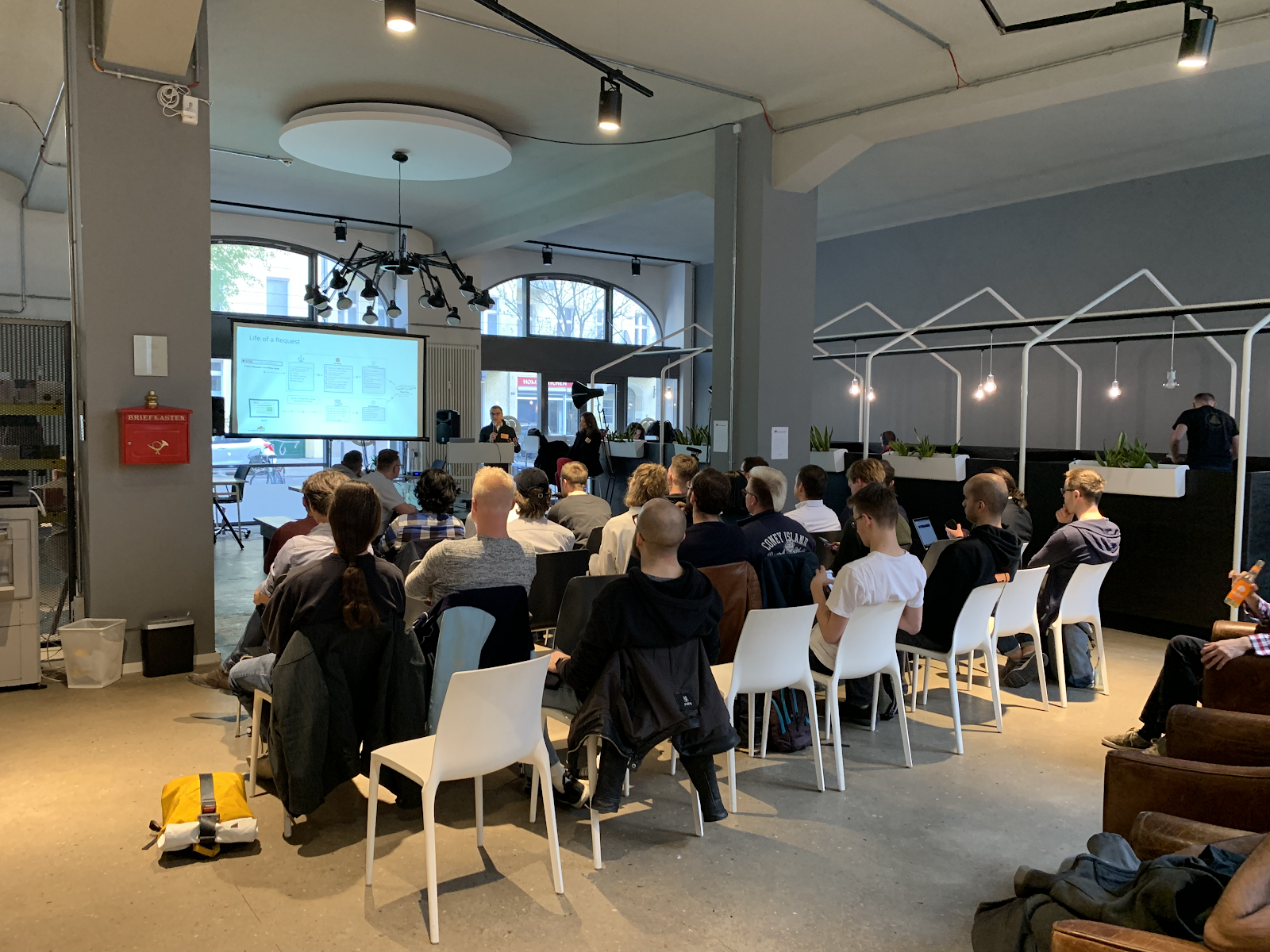Cisco Makes CloudCenter Management Tool SaaSy
Cisco’s multi-cloud management tool CloudCenter Suite is now globally available as a...
Cisco’s multi-cloud management tool CloudCenter Suite is now globally available as a...

“Hi! My name is Cosmin and I am your Customer Success Manager here at Cloudflare” is how I usually introduce myself and almost always I get met by a blank stare. It could be the name (it’s uncommon, to say the least) but in actual fact, many Customer Success professionals go through the same experience. Could it be that the title doesn’t give away much? What does ‘Customer Success Manager’ actually mean? Is that how they call Customer Support nowadays? And in fact, isn’t everyone in a business responsible for ‘customer success’?
Well let me explain..
Customer Success is a relatively new function that is becoming increasingly popular with XaaS businesses (XaaS stands for Anything as a Service). With any XaaS product, it is no longer the case that you make a significant investment in a perpetual license and are left to figure out how to implement it, how to use it and what else it can do. XaaS businesses operate a subscription model whereby if the product is not actually solving your problem, you can just stop the subscription and move on. Businesses operating a subscription model need to ensure that there is continuous and even increasing Continue reading
We had the chance recently to sit down with the Citizens Bank mortgage division and ask them how they’ve incorporated innovation into a regulated and traditional business that is still very much paper-based.
The most important lesson they’ve learned: you have to be willing to “fail fearlessly,” but to do that, you also have to minimize the consequences and cost of failure so you can constantly try new ideas. With Docker Enterprise, the team has been able to take ideas from concept to production in as little as a day.
Here’s what they told us. You can also catch the highlights in this 2 minute video:
Matt Rider, CIO Mortgage Division: Our focus is changing the mortgage technology experience at the front end with the borrower and on the back end for the loan officers and the processors. How do we bring those two together? How do we reduce the aggravation that comes with obtaining a mortgage?
Matt: When I came here I recognized that we were never going to achieve our vision if we kept doing things the same way. We wanted to reduce the aggravation that comes with obtaining a mortgage. Continue reading
In this episode Jordan shares his thoughts on some of the nuanced differences between simple, complicated, and complex network designs. These are terms and descriptions that get thrown around a lot in our industry but do you really understand what they are or how they should impact your design?
Outro Music:
Danger Storm Kevin MacLeod (incompetech.com)
Licensed under Creative Commons: By Attribution 3.0 License
http://creativecommons.org/licenses/by/3.0/
The post Simple Complicated Complexity appeared first on Network Collective.
The San Diego Supercomputing Center is overdue for a new supercomputer and thanks to a $10 million grant from the National Science Foundation, next year it will finally get one. …
SDSC Doubles Up Performance With Expanse Supercomputer was written by Michael Feldman at The Next Platform.
It has been said over and over that all your pet needs is food, water, a clean environment, and love to be healthy and happy. While that is a nice sentiment, it isn’t exactly true. For years now, people have known that certain chemical and fillers in dog and cat foods are harmful to their pets, but did you know that flea and tick products, pet shampoos, and even dietary supplements that are made for pets made actually make them sick or shorten their lifespan too?
Thankfully, we’ve come a long way with new animal innovations in supplements that we can provide our pets. Just as we’ve learned that natural vitamins and supplements are better for our health and the health of our families, we are now discovering that natural organic supplements and products are better for our pets’ health as well. Keep reading to learn more!
Many pet owners notice that after using flea and tick products on their pets, some pets tend to develop rashes, itchy skin, and hair loss. These symptoms have been associated with toxic chemicals in these types of products. Many pets also have severe reactions to pet shampoos Continue reading

Back in 2010, I conceptualised and started a pilot project to see how we could introduce Internet connectivity to unserved and underserved rural areas. The ICT4D community – along with a number of international organisations – had been talking about how getting people online could transform lives, but most of the solutions appeared to be either top-down or boiler-plated.
My idea was simple – work together with a local partner to find a rural location where getting people online could make a difference, ensure people from the community were trained to operate and maintain the network (rather than being dependent on outsiders), use cheap easy-to-find WiFi equipment (so if things break down, the nearest town would have spares), and then train the community, empowering them to create and use various digital services. Essentially, this was a network for the people, by the people.

Thus was born our award-winning Wireless For Communities (W4C) initiative. We have had a tremendous amount of success with the programme – having deployed and inspired literally hundreds of networks in South Asia and helped connect the most marginalised of communities. This has also become a global programme for the Internet Society Continue reading
Hello my friend,
This is the third and the last article about REST API basics. In the previous articles, you have learned how to collect information and create/delete new entries. Today you will learn how to modify existing entries.

2
3
4
5
retrieval system, or transmitted in any form or by any
means, electronic, mechanical or photocopying, recording,
or otherwise, for commercial purposes without the
prior permission of the author.
This article is a continuation of the two previous: GET and POST/DELETE. You should start with that to get the full picture.
You will learn how to use two requests:
As you might remember, the interaction with the REST API is described by CRUD model, what stands for Create, Read, Update, and Delete. In this concept, Update operation is represented by PATCH and PUT HTTP methods. Later in this article you will figure out what is the difference between PATCH and PUT. It is significant.
To put the context, we will Continue reading
Interactive checks for coordination avoidance Whittaker & Hellerstein et al., VLDB’19
I am so pleased to see a database systems paper addressing the concerns of the application developer!
To the developer, a strongly consistent system behaves exactly like a single-threaded system running on a single node, so reasoning about the behaviour of the system is simple1. Unfortunately strong consistency is at odds with performance… On the other hand weak consistency models… put a tremendous burden on the application designer to reason about the complex interleavings of operations that are allowed by these weak consistency models.
To be able to reason effectively about a system, it’s tremendously helpful to be able to rely on some things that we know will always be true. The fancy word for those is invariants, because whatever happens they never vary. A example class of application invariants is database integrity constraints. Unfortunately, under weak consistency models finding solid ground to reason about invariants is really hard:
Even if every transaction executing in a weakly consistent system individually maintains an application invariant, the system as a whole can produce invariant-violating states.
In a distributed setting with weak consistency, an object is replicated across a Continue reading
In mid 2000s I wrote a number of articles describing various TCP/IP features. Most of them are a bit outdated, so I decided to clean up, update and repost the most interesting ones on ipSpace.net, starting with Never-Ending Story of IP Fragmentation.
The first part of that article is already online, covering MTU basics and drawbacks of IP fragmentation.
Dell and VMware launched an SD-WAN appliance powered by VMware's VeloCloud and a new product called...
Open networking is based on open standards, interoperability, and open source software such as Linux. One of the things that has made Linux so ubiquitous is the unparalleled control it offers to users in terms of customization and building intelligence into the network. Much of this advantage comes in the form of the automation and orchestration possible with Linux-based networking.
First adopted by hobbyists, widespread use of Linux in production environments only started to take off in the mid-1990s in the supercomputing field, where organizations such as NASA started to replace their overly expensive hardware with clusters of inexpensive commodity computers running Linux. Today, Linux systems are used throughout computing.
Linux can be found in servers, clouds, and network equipment. Linux is ubiquitous in the embedded systems space, and is the operating system upon which virtually all modern supercomputers are built. Even Microsoft (which once derided Linux as “a cancer”) now champions Linux, building its own Linux distributions for its Azure cloud networking and making it possible to run Linux on top of Windows.
Linux offers organizations numerous ways to automate devices and workloads. This includes task scheduling, scripting, automation, and policy management. Because Linux is used widely in so Continue reading

We all can make some pretty rash decisions under stress. I once burned a hole through my undershirt instead of ironing my button-down shirt because I was so nervous before a presentation.
The Internet has its challenges and sometimes can seem like a scary place. In the 2019 survey, the CIGI-Ipsos Global Survey on Internet Security and Trust, 62% of respondents who said they distrust the Internet cited a lack of Internet security as a reason why.
When it comes to facing challenges on the Internet, everyone, from average Internet users to government officials, tends to act the same way I do before presentations – frantically and with questionable results.
In pursuit of security, some governments are making decisions that could harm the Internet as we know it. They’ve taken actions that could weaken digital security, have the potential to fracture the Internet, and some have even shut the Internet down in their country. Like burning a hole through an undershirt and having to wear a wrinkled button-down shirt to a presentation, these actions do little, and make things worse.
The survey results highlighted in our report, “The State of User Privacy and Trust Online,” tell a Continue reading